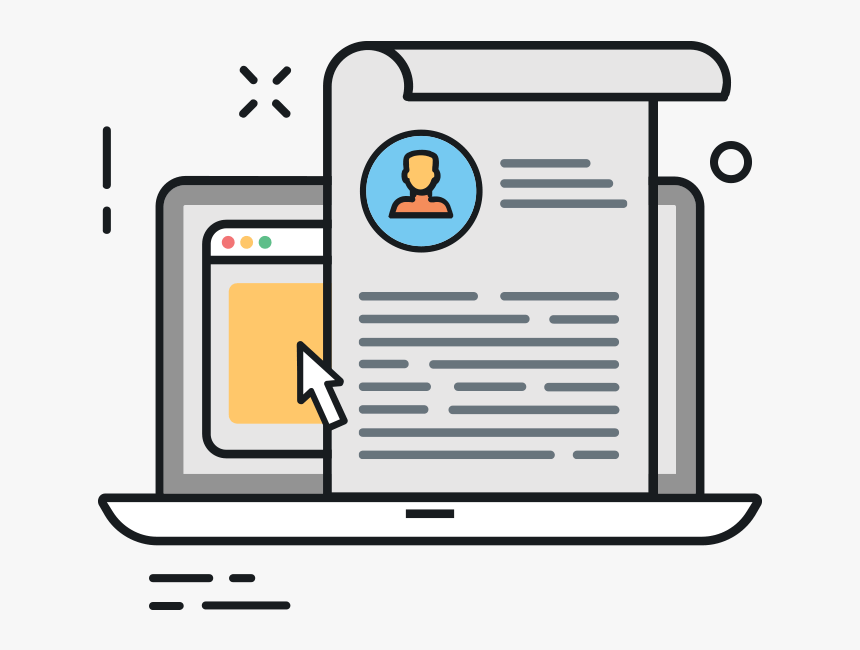15 Strategic Imperatives to Elevate Your Website's Conversion Rate
In the realm of digital marketing, a website's conversion rate—the percentage of visitors who complete a desired action, such as making a purchase or filling out a form—is a critical metric. Optimizing this rate is essential for maximizing the return on investment (ROI) from your online presence. This article delves into 15 strategic imperatives, grounded in marketing principles and behavioral psychology, that can significantly enhance your website's ability to convert visitors into valuable customers.
-
Crafting Persuasive Calls-to-Action (CTAs): The cornerstone of any successful conversion strategy is a compelling call-to-action. CTAs should be more than just buttons; they should be strategically placed, visually prominent, and utilize action-oriented language that resonates with the user's intent. Consider the principles of the Elaboration Likelihood Model, which suggests that users are more likely to be persuaded when they are highly involved and motivated. For example, instead of a generic "Submit" button, use "Unlock Your Exclusive Offer Now!" This approach not only clarifies the benefit but also creates a sense of urgency and value. Learn how persuasion secrets can influence effective communication.
-
Strategic Landing Page Optimization: Landing pages serve as the digital storefront for specific campaigns or products. They should be meticulously designed to align with the visitor's expectations and guide them seamlessly toward conversion. Apply the principles of the AIDA model (Attention, Interest, Desire, Action) to structure your landing page content. Start with an attention-grabbing headline, build interest with compelling visuals and benefits, create desire through social proof and testimonials, and conclude with a clear call to action. For instance, a landing page for a new software product might feature a video demonstration, customer testimonials, and a prominent "Start Your Free Trial" button.
-
Data-Driven Layout Refinement Through A/B Testing: Website layout isn't just about aesthetics; it's about guiding the user experience. Employ A/B testing to experiment with different layouts, color schemes, and font pairings to identify the most effective combinations for your target audience. This aligns with the principles of iterative design, where continuous testing and refinement lead to optimal results. Use tools like Google Optimize or Optimizely to systematically test variations and make data-driven decisions. For example, test two versions of a product page, one with a customer review slider at the top and another with the product description, to see which performs better.
-
Ensuring Seamless Mobile Responsiveness: In an era dominated by mobile devices, a non-responsive website is a significant liability. Mobile-first indexing by search engines like Google prioritizes websites that provide a seamless experience across all screen sizes. Implement responsive design principles using CSS media queries to ensure your website adapts flawlessly to different devices. Test your website on various devices and browsers to identify and resolve any usability issues. A practical application is ensuring that images are optimized for mobile viewing to reduce loading times, which is crucial for mobile users.
-
Streamlining the Checkout Process: A complex or cumbersome checkout process can lead to cart abandonment and lost sales. Simplify the process by minimizing the number of steps required, offering guest checkout options, and providing a variety of secure payment methods. Apply Hick's Law, which states that the time it takes to make a decision increases with the number and complexity of choices. Reduce the cognitive load on users by providing clear instructions, progress indicators, and security badges. Consider implementing one-page checkout for a smoother and faster experience.
-
Optimizing Website Loading Speed for Enhanced User Experience: Website loading speed is a critical factor in user experience and search engine rankings. Slow-loading websites can lead to high bounce rates and decreased conversions. Optimize your website's performance by compressing images, minifying CSS and JavaScript files, leveraging browser caching, and using a Content Delivery Network (CDN). Tools like Google PageSpeed Insights can help identify performance bottlenecks and provide actionable recommendations. In real-world application, large e-commerce sites often use CDNs to distribute content across multiple servers, ensuring fast loading times for users worldwide.
-
Crafting Persuasive and Engaging Copy: The words on your website are your sales force. Craft compelling and persuasive copy that highlights the benefits of your products or services, addresses customer pain points, and builds trust and credibility. Employ storytelling techniques to connect with your audience on an emotional level. Use customer testimonials, case studies, and social proof to demonstrate the value of your offerings. When describing a product, focus on the outcomes and transformations it provides, rather than just listing features.
-
Leveraging Live Chat Support for Instant Assistance: Live chat support provides instant assistance to website visitors, addressing their questions and concerns in real-time. This can significantly improve customer satisfaction and increase conversion rates. Implement a live chat solution that integrates seamlessly with your website and is staffed by knowledgeable and friendly agents. Use proactive chat invitations to engage visitors who may be struggling to find information or complete a task. This application aligns with the principles of customer relationship management (CRM), focusing on building and maintaining strong customer relationships.
-
Showcasing Social Proof to Build Trust and Credibility: Social proof, such as customer reviews, testimonials, and ratings, can significantly influence purchasing decisions. Display positive customer feedback prominently on your website to build trust and credibility. Implement a review system that allows customers to easily submit and view reviews. Consider featuring case studies that demonstrate the impact of your products or services on real customers. This strategy leverages the concept of social influence, where people are more likely to take action when they see others doing the same.
-
Optimizing Email Marketing Campaigns for Targeted Engagement: Email marketing remains a powerful tool for nurturing leads and driving conversions. Segment your email list based on user behavior, demographics, and preferences to deliver personalized and targeted content. Craft compelling subject lines that entice recipients to open your emails. Use email automation to trigger relevant messages based on specific actions, such as abandoned carts or website visits. Integrating your email marketing platform with your CRM system can provide valuable insights into customer behavior and improve campaign effectiveness. Also consider how unlocking higher email open rates could boost your website conversion.
-
Analyzing Website Analytics for Data-Driven Insights: Website analytics provide valuable insights into visitor behavior, helping you identify areas for improvement and optimize your conversion funnel. Track key metrics such as conversion rates, bounce rates, time on page, and user flow. Use tools like Google Analytics to analyze data and identify patterns. For example, if you notice a high bounce rate on a particular page, investigate the content and design to determine why visitors are leaving. This aligns with the principles of data-driven decision-making, where insights from data inform strategic actions.
-
Offering Strategic Incentives to Drive Action: Incentives, such as exclusive discounts, limited-time offers, or free shipping, can motivate potential customers to convert. Use incentives strategically to create a sense of urgency and value. Offer a discount for first-time customers, provide free shipping on orders over a certain amount, or run limited-time promotions. Ensure that your incentives are clearly communicated and easy to redeem. Consider using countdown timers to emphasize the urgency of limited-time offers.
-
Implementing Exit-Intent Pop-ups to Capture Attention: Exit-intent pop-ups can capture the attention of visitors who are about to leave your website, offering them a last-minute opportunity to convert. Use exit-intent pop-ups to offer a special discount, invite visitors to subscribe to your newsletter, or provide a free resource. Design your pop-ups to be visually appealing and non-intrusive. Ensure that they provide clear value to the user and are easy to dismiss. This strategy leverages the principle of loss aversion, where people are more motivated to avoid a loss than to gain an equivalent benefit.
-
Optimizing for Voice Search to Enhance Discoverability: With the rise of voice assistants like Siri and Alexa, optimizing your website for voice search is crucial. Incorporate natural language and long-tail keywords into your content. Structure your content in a conversational style, answering common questions that users might ask. Ensure that your website is mobile-friendly and loads quickly, as these factors are important for voice search rankings. Claim and optimize your Google My Business listing to improve your visibility in local voice search results.
-
Using Compelling Visuals to Engage and Communicate: Humans are visual creatures, and high-quality images, videos, and infographics can significantly enhance engagement and communication. Use visuals to showcase your products or services, illustrate complex concepts, and tell compelling stories. Ensure that your visuals are optimized for web use to reduce loading times. Consider using video testimonials to build trust and credibility. The StoryBrand framework emphasizes the importance of clear and compelling visuals to communicate your brand's message effectively.
Conclusion and Recommendations
Elevating a website's conversion rate is a multifaceted endeavor that demands a strategic blend of marketing acumen, technical proficiency, and an unwavering focus on user experience. The 15 imperatives outlined above provide a comprehensive framework for optimizing your website and maximizing its potential to convert visitors into customers. By prioritizing clear calls to action, strategic landing page design, data-driven layout refinement, and seamless mobile responsiveness, businesses can create a user-centric online experience that fosters trust and drives conversions. Furthermore, optimizing website loading speed, crafting persuasive copy, leveraging live chat support, and showcasing social proof can further enhance customer satisfaction and build brand loyalty.
To ensure long-term success, continuous monitoring, testing, and optimization are essential. Businesses should regularly analyze website analytics, conduct A/B tests, and gather customer feedback to identify areas for improvement. Additionally, staying abreast of emerging trends in digital marketing, such as voice search optimization and the use of artificial intelligence, can provide a competitive edge. Implementing these strategies requires a holistic approach, involving collaboration between marketing, design, and technical teams. The impact of these improvements extends beyond immediate sales, contributing to increased brand awareness, customer lifetime value, and overall business growth.
Further research could explore the application of machine learning algorithms to personalize website content and optimize the conversion funnel in real-time. Additionally, investigating the impact of emerging technologies, such as augmented reality and virtual reality, on the online shopping experience could provide valuable insights for future conversion optimization strategies.
Related Articles
- StoryBrand Framework: Customer-Focused Storytelling for Sales Transformation
- Persuasion Secrets: Influence Strategies for Effective Communication
- Unlock Higher Email Open Rates: 15 Proven Strategies
- Data-Driven Strategies: Unlocking Market Insights and Competitive Edge
- Customer Journey Optimization: Driving Sales Growth Through Strategic Mapping
Reader Pool:
Considering the increasing importance of personalized user experiences, how can businesses effectively balance the use of data-driven optimization techniques with the need to protect user privacy and maintain trust?
```





